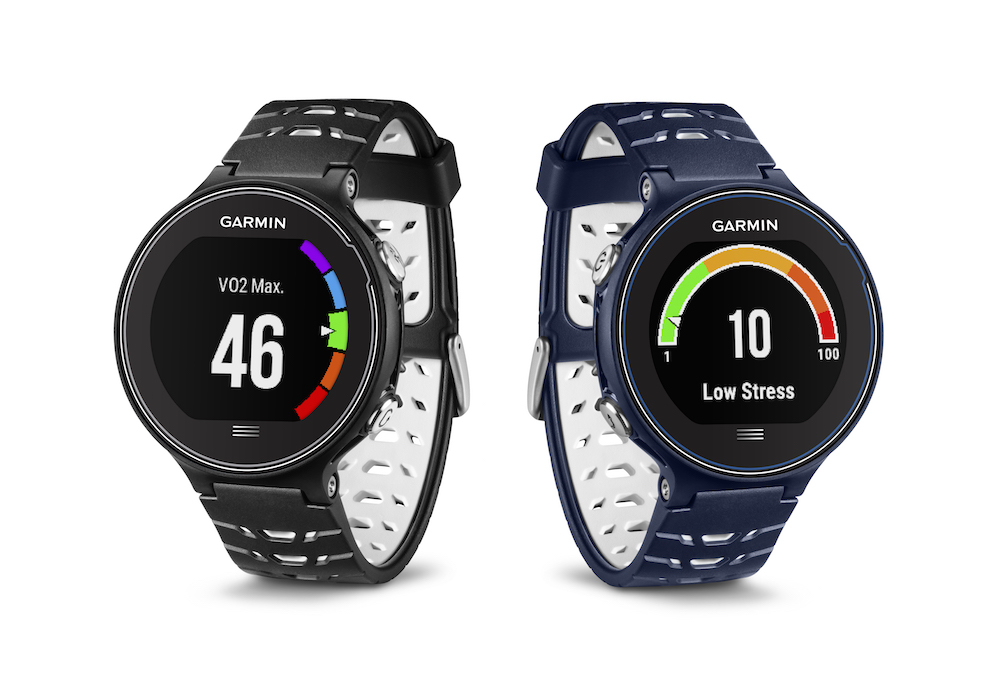Garmin Introduces Three New GPS Watches
The Garmin Forerunner 230, 235 and 630 are smart updates to Garmin's lineup of GPS running watches.

As the running season begins to draw to a close, Garmin is introducing three new GPS watches that are strong updates to its current lineup. The Garmin Forerunner 230, 235 and 630, which start at $249, $329, and $399, respectively, feature more than 11 hours when using GPS, all-day activity tracking, a customizable display and smartphone notifications.
The Garmin Forerunner 235 is the successor to the Forerunner 225, our favorite fitness tracker for runners. Like that watch, the 235 has a built-in heart rate monitor, and displays heart rate information in a graphical interface called Garmin Elevate, to make it easier to see what zone you're in over an extended period. The 235 can also estimate a runner's VO2 Max, a measure of how much oxygen one can absorb. It has an estimated battery life of 11 hours when using GPS, and 9 days when using it as an all-day activity tracker. The 235, which will come in black with red, gray or blue accents, will be available in the fourth quarter of 2015 for $329.
MORE: Best Fitness Trackers 2015
The Forerunner 230 lacks a built-in heart rate monitor, but can be paired with a chest strap. Otherwise, it has the same features as the 235, including the Garmin Elevate heart rate chart, smartphone notifications, and all-day activity tracking. Because it doesn't have to power a heart rate sensor, the 230 can last up to 16 hours when using GPS and 5 weeks in activity tracking mode, according to Garmin. It's also less expensive: $249, or $299 when bundled with a chest strap. It will be available in three colors (black and white, purple and white, and yellow and black) and go on sale in Q4 of 2015.
At the top end of Garmin's running line is the new Forerunner 630, which incorporates several new measurements for more active runners looking to get even more data about their performance. It can measure stride length; Ground Contact Time Balance, which measures if you're running with an even stride; Vertical Ratio (how much you're bouncing up and down as you run); Lactate Threshold, which determines if you're running too hard; Stress Score, which looks at your heart rate variability; and Performance Condition, which compares your current fitness level to your baseline to see if you're ready for that day's race.

The Forerunner 630 also lacks a built-in heart rate monitor, but can be paired with a chest strap. It also has a color touchscreen and Wi-Fi, so that the watch can automatically upload your workout data to your Garmin account when connected to a network. Like the 230 and 235, the Forerunner 630 also doubles as an all-day activity tracker (steps, distance, calories and sleep), and can provide smartphone notifications. It will last up to 16 hours when using GPS, and 4 weeks in activity tracking mode. Available for $399 ($449 with chest strap), the Forerunner will come in a blue or a black/white color scheme.
The lack of a built-in heart rate monitor in the Forerunner 630 is a bit of a bummer, but given the target audience, who's more than likely to want (or already own) a more accurate chest strap, the decision makes sense.
Sign up to get the BEST of Tom's Guide direct to your inbox.
Get instant access to breaking news, the hottest reviews, great deals and helpful tips.
While I'm intrigued by all of the bells and whistles of the Forerunner 630, I suspect that the Forerunner 235 will be the watch that appeals to the greatest number of runners. A built-in heart rate monitor, plus its 11 hours of battery life, makes it attractive to those who don't want to hassle with a strap, but want a fairly large amount of data at the end of their runs.

Michael A. Prospero is the U.S. Editor-in-Chief for Tom’s Guide. He oversees all evergreen content and oversees the Homes, Smart Home, and Fitness/Wearables categories for the site. In his spare time, he also tests out the latest drones, electric scooters, and smart home gadgets, such as video doorbells. Before his tenure at Tom's Guide, he was the Reviews Editor for Laptop Magazine, a reporter at Fast Company, the Times of Trenton, and, many eons back, an intern at George magazine. He received his undergraduate degree from Boston College, where he worked on the campus newspaper The Heights, and then attended the Columbia University school of Journalism. When he’s not testing out the latest running watch, electric scooter, or skiing or training for a marathon, he’s probably using the latest sous vide machine, smoker, or pizza oven, to the delight — or chagrin — of his family.
